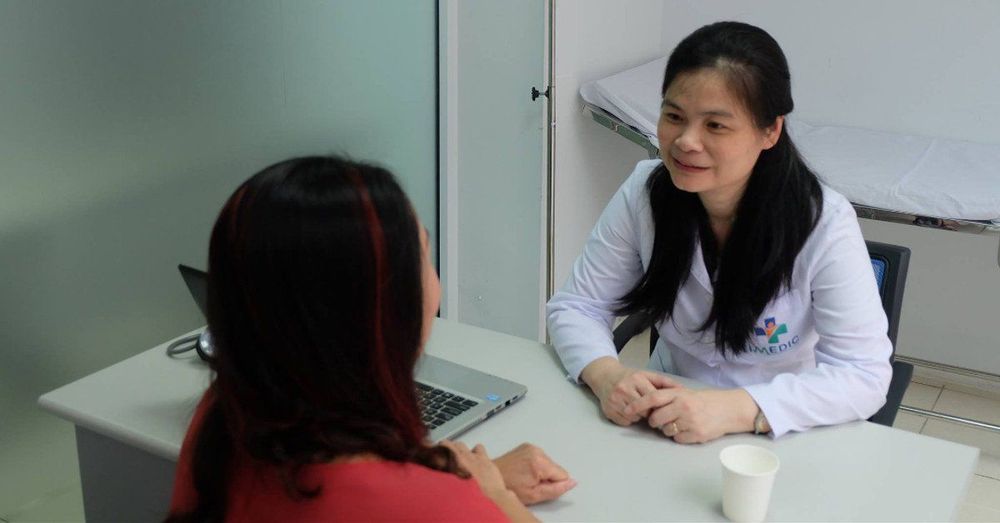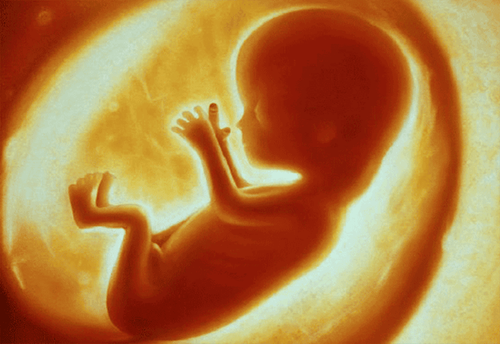This is an automatically translated article.
The article was consulted with Dr. To Kim Sang - Oncology Center, Vinmec Central Park International General Hospital.Neuroblastoma is a very common malignancy in children, especially young children, but neuroblastoma is rarely heard in adults. So whether neuroblastoma is seen in adults or not, what to pay attention to, let's find out through the article below.
1. What is neuroblastoma?
Neuroblastoma is a type of malignant solid tumor that originates in the nerve cells of infants and young children. It can begin in nerve tissue near the cervical spine, chest, abdomen, and pelvis, but most commonly it first appears in the adrenal glands (each person has two adrenal glands, which are the adrenal glands). located at the upper poles of the kidneys, responsible for the production of hormones that help control body activities, such as heart rate and blood pressure).Neuroblasts are immature nerve cells in the fetus. Normally, neuroblasts develop to mature and differentiate into neurons or adrenal medullary cells (cells located in the central region of the adrenal gland). Neuroblastoma forms when neuroblasts do not grow as they should.
Sometimes, babies are born with some neuroblasts still present, but they eventually mature, differentiating into normal nerve cells without becoming cancerous. An immature neuroblast can continue to grow, grow, and form an abnormal mass called a tumor.
Neuroblastoma is most common in infants and children under 5 years of age. It can form during fetal life, and is sometimes detected through fetal ultrasound. However, most cases of neuroblastoma are discovered only after the cancer has spread to other parts of the body, such as the lymph nodes, liver, lungs, bones, and bone marrow.
Neuroblastoma accounts for approximately 6% of all childhood cancers in the United States, and up to 90% of all neuroblastoma cases are detected in children under 5 years of age. Neuroblastoma is quite rare (<10%) in children over 10 years of age, and similarly, neuroblastoma in adults is extremely rare.

U nguyên bào thần kinh thường gặp nhất ở trẻ nhũ nhi và trẻ nhỏ dưới 5 tuổi
2. Become a Neuroblastoma Survivor
During treatment for neuroblastoma, the biggest concern for most families is going about their day-to-day life during treatment to beat the cancer, but after successful treatment, the concern fades. transition to the long-term effects of neuroblastoma and of treatment, particularly the risk of neuroblastoma recurrence.Any patient and family wants to return to a normal life, putting neuroblastoma and the treatment process back in the past, but to do so, the care, follow-up after treatment should be followed, so that the patient has the best chance of recovering and growing into a normal adult.
3. Follow-up process after treatment
After treatment, your doctor may order follow-up tests as well as perform the necessary imaging tests to see if the tumor is still present. The tests and imaging needed will be based on your risk group, tumor size and location, as well as other risk factors.Neuroblastoma can recur, so patients should fully comply with follow-up visits and should notify their doctor of any new symptoms. In the first time after treatment, the number of follow-up visits as well as tests to be done will be more than after the disease has stabilized for a while. The frequency of follow-up and follow-up will depend on many factors related to the spread of the disease, previous treatments such as radiation therapy, chemotherapy,...

Bệnh nhân cần tái khám thường xuyên
4. Is there a way to reduce the risk of neuroblastoma recurrence in adults?
To date, there is no clear evidence for any factors or behaviors that can help reduce the risk of neuroblastoma recurrence in adults who have experienced the disease. However, when the patient grows up and becomes an adult, maintaining a healthy lifestyle such as not smoking, eating a balanced, nutritious diet, exercising regularly, keeping the weight at a healthy level. Although it has not been proven to reduce the risk of recurrence, it will certainly bring many health benefits, as well as help limit the risk of some other types of cancer.5. Emotional and social problems in people experiencing neuroblastoma
The timing of a neuroblastoma diagnosis can be devastating for the entire patient's family. If the patient is young, he or she may not retain many memories of the treatment and victory over the disease. For older children, children will have many difficulties, such as needing to miss school, not participating in favorite activities, fear of treatment, obsession with their own illness, etc. Need help from medical professionals, from family and society to help patients overcome illness and reintegrate back into life, develop into normal adults like other people.Adult survivors of neuroblastoma need to accept the fact that the disease can recur, and therefore they need to be mentally prepared to face that situation when it does. truth, and the accompanying problems such as financial problems, caregivers, need to take time off work for treatment, the risk of unemployment, etc. These are real burdens, and not There is no better way than to plan and prepare mentally to face and deal with it. Insurance is one of the options that should be taken into account to help take a part of the burden when difficult situations arise.
Please dial HOTLINE for more information or register for an appointment HERE. Download MyVinmec app to make appointments faster and to manage your bookings easily.
The article references the source: cancer.org












